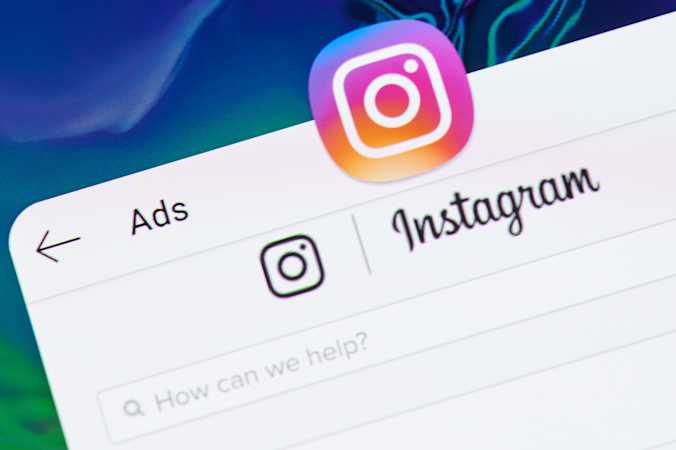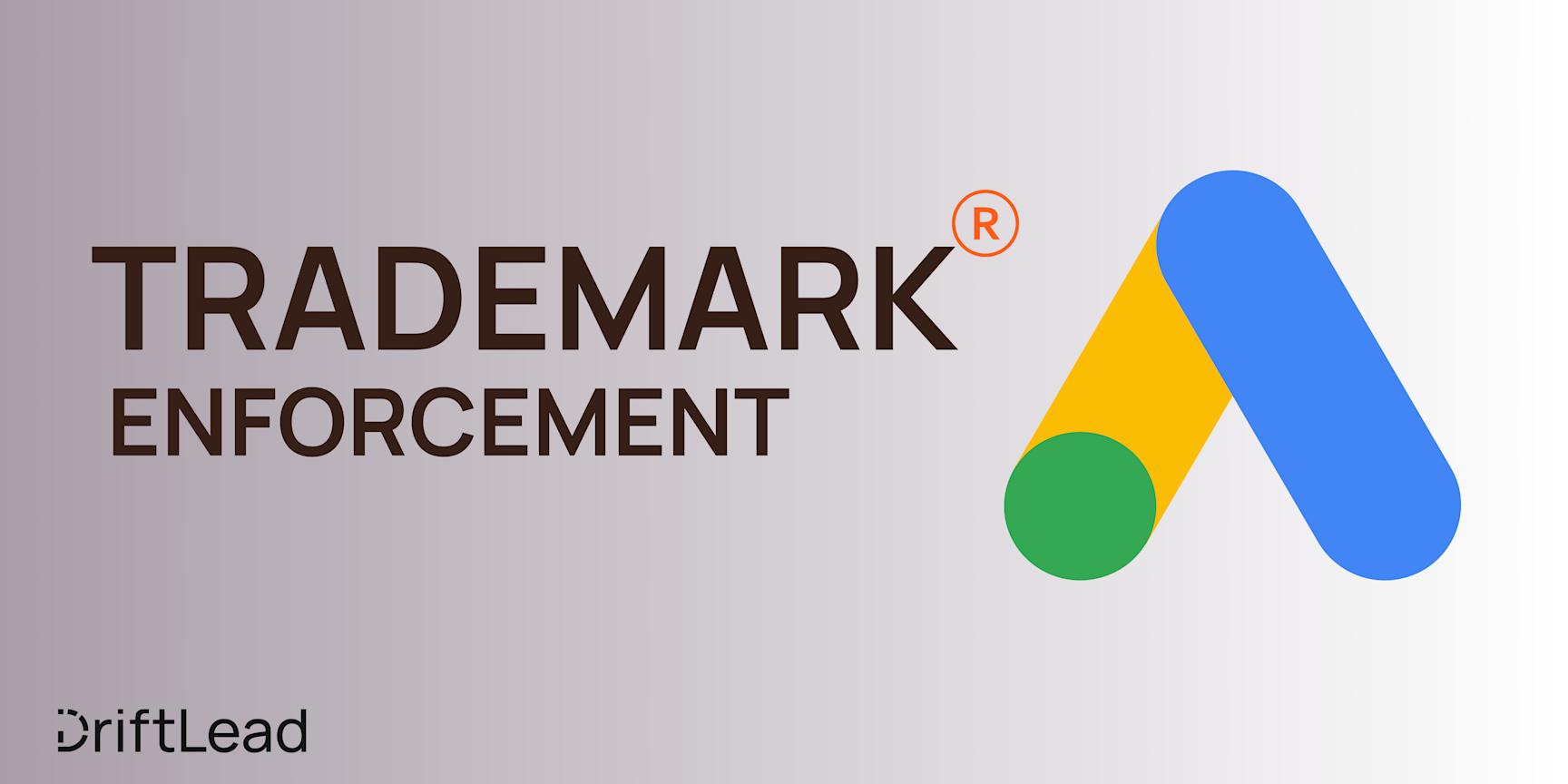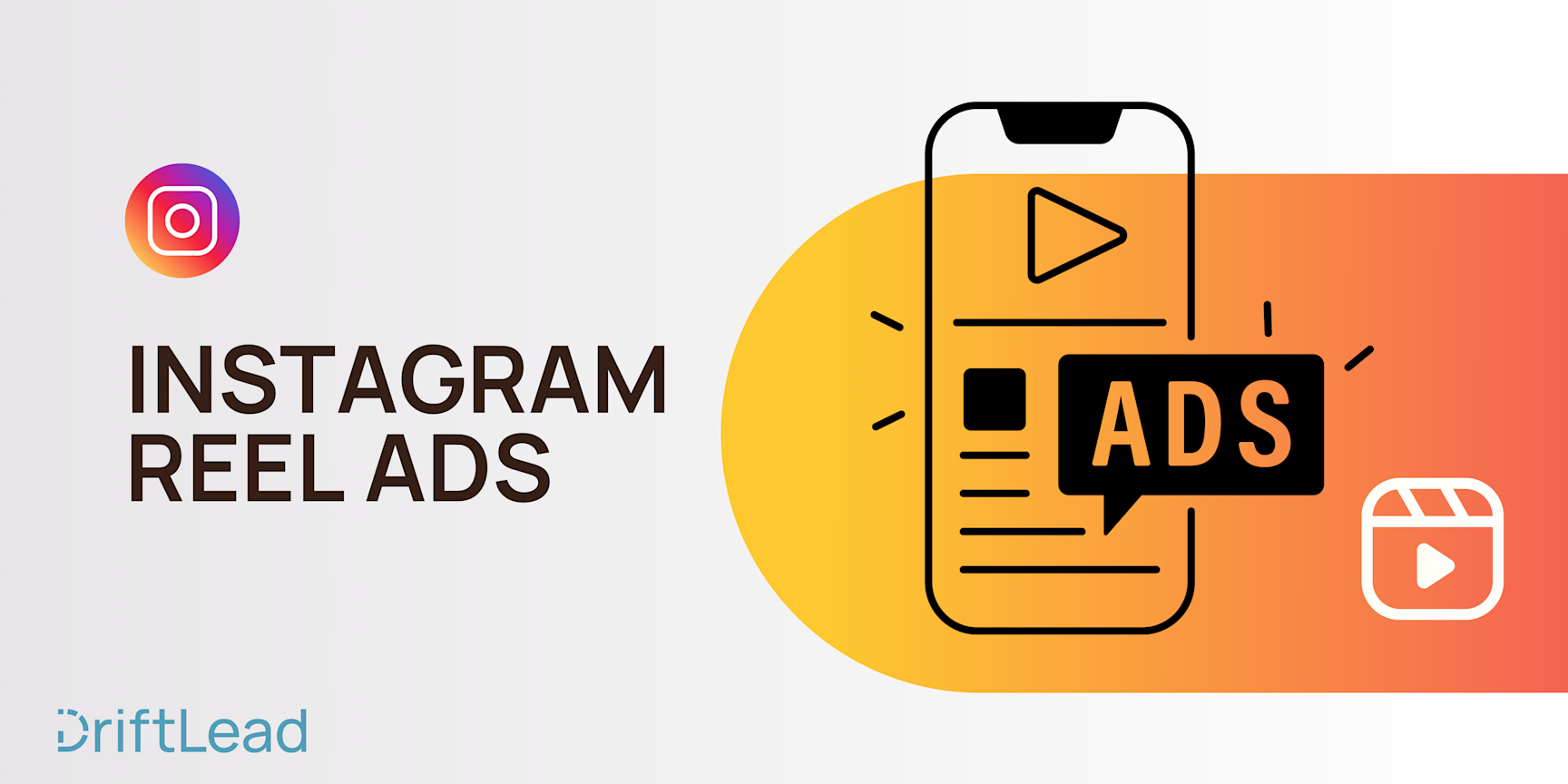How to Calculate Instagram Ads ROI - A Complete Guide
17 Oct, 2023
Discover the nuances of calculating Instagram ads ROI, from understanding campaign objectives to navigating tracking discrepancies. Dive into our comprehensive guide and steer your ad campaigns toward success.

Jump to:
#social
Hop on our weekly newsletter train! We're sharing tips so stellar, we're practically job-threatening ourselves!
Let's talk about Instagram—the social media haven where selfies reign, and your avocado toast can garner likes from all corners of the globe. But if you're a marketer, Instagram represents so much more than filtered snapshots; it's a veritable goldmine for connecting with consumers and driving business results.
But just as you wouldn't dig for gold without a plan (or at least a sturdy shovel), you shouldn't invest in Instagram advertising without understanding the returns on your investment. In this post, we will be discussing ROAS – a metric that's as essential as your morning coffee. Calculating your ROI Instagram ads, however, can be more complicated than you may think. So buckle up, and let's dive into the nuances, the strategies, and the all-important 'how-tos' of gauging your Instagram ad success.
What is ROAS?
ROAS—short for"Return On Advertising Spend", is a key metric in online advertising, and one you should definitely keep handy in your tool belt. Put simply, ROAS is a metric that tells you how much revenue you’re generating for every dollar you spend on advertising. Think of it as a bang-for-your-buck gauge.
To calculate ROAS, you use the formula:

So, if you spent $100 on an Instagram ad campaign and generated $500 in sales from it, your ROAS would be 5. This means that for every dollar you spent, you earned $5 in return. Sounds pretty straightforward, right? Well, when it comes to Instagram (and Facebook ads, in general), things can get a smidge more intricate. But fear not; we'll dive into the specifics as we progress through this guide.
A high ROAS indicates that your advertising campaign is performing well and generating a considerable amount of revenue. On the flip side, a low ROAS might suggest that there's room for optimization or that the campaign isn't aligning with its intended audience. But like all things in the dynamic world of digital marketing, context is key. A ROAS that might seem low in one industry could be fantastic in another. So, don't let ROAS be your sole guiding star; it's best understood in conjunction with other performance metrics.
Why Instagram Ads ROI Can Be Tricky
Instagram, with its visually rich tapestry, may seem like a marketer's dream. But when it comes to ad performance and tracking ROI, it can become a web of intricacies that isn't always straightforward. Beyond the vivid images of scenic landscapes and gourmet brunches, there are a host of factors that can make calculating ROI on Instagram a real conundrum:
User Behavior on Instagram: The platform is predominantly about inspiration, connection, and content consumption. The journey from casual scrolling to conversion can be winding, involving multiple touchpoints. So, directly linking a sale to a specific ad might not always be clear-cut.
Diverse Ad Objectives: Instagram provides a smorgasbord of campaign objectives, ranging from raising brand awareness to driving conversions. The direct monetary return can fluctuate significantly depending on the chosen objective.
Conversion Tracking Discrepancies: Google Analytics and Facebook (which owns Instagram) might report different conversion figures. This disparity arises from the way each platform attributes conversions, as well as from users who might block one tracking method but not the other.
Privacy Changes: The digital advertising landscape has recently undergone seismic shifts due to privacy changes. Cookie opt-ins and iOS updates have disrupted conventional conversion tracking. It means that fewer users are being tracked, making it harder to measure the exact impact of your ads.
Varied Ad Formats: Instagram’s diverse ad formats, such as Stories, IGTV, and carousel posts, are tailored to different user behaviors. Assigning a clear dollar value to each, given their varied objectives, can be perplexing.
Top-of-Funnel Metrics: Some brands lean on Instagram for brand equity rather than direct sales. In such cases, attributing a clear monetary value to metrics like reach or impressions can be a challenge.
External Influences: Factors external to your campaign, like algorithm tweaks, competitor actions, or larger market trends, can also impact ad performance. It's essential to differentiate between a dip in ROAS caused by your ad's content and one triggered by factors outside your control.
Treading the Instagram advertising waters requires not just an understanding of your campaign objectives, but also a firm grasp on the platform's idiosyncrasies and the larger digital advertising ecosystem's shifts.
Types of Instagram Ad Campaigns and Their Different ROAS Considerations
Instagram is kind of like a kaleidoscope of all sorts of content and campaign types. The platform offers a diverse set of settings tailored to different marketing objectives, each with its unique ROAS considerations. Let's discuss a few of the most common examples.
Brand Awareness Campaigns:
Goal: To increase the overall visibility of your brand among the Instagram populace.
ROAS Consideration: Direct monetary return might be intangible here (although we will discuss how to measure value later on). Instead, consider metrics such as reach, impressions, and frequency. Although they don't directly tie to revenue, enhanced brand recognition can drive future sales.
Traffic Campaigns:
Goal: Direct users to a specific destination, such as a landing page or an app.
ROAS Consideration: Beyond just counting the clicks, assess the quality of traffic - is it leading to sign-ups, longer page views, or other valuable actions? The cost per click (CPC) can help gauge the efficiency of your spending.
Engagement Campaigns:
Goal: Boost the number of engagements (likes, shares, comments) on your post or profile.
ROAS Consideration: An uptick in engagement can indicate stronger brand loyalty or content resonance. This is another campaign where immediate revenue might be elusive, although this bond can precipitate future conversions.
Conversion Campaigns:
Goal: To drive a specific action like sales, sign-ups, or app downloads.
ROAS Consideration: The most straightforward in terms of ROI. Assess the total revenue generated against ad spend. However, consider the lifetime value (LTV) of a customer; a single purchase might lead to repeat business down the line.
Lead Generation Campaigns:
Goal: Acquire user information, like email addresses or phone numbers, for future marketing endeavors.
ROAS Consideration: It's not just about the number of leads but the quality. Assess how many leads transition to paying customers and consider the potential revenue from this conversion.
Calculating ROI for Top-of-Funnel (Awareness) Campaigns:
Navigating the ROI waters for top-of-the-funnel campaigns can feel a bit like steering a ship through misty seas – you know there's land (or in this case, profit) ahead, but it’s not immediately visible. Awareness campaigns often don't provide a direct monetary return. Instead, they sow the seeds for potential future harvests. Let's unpack how to approach their ROI:
Attribution Window:
Given that awareness campaigns lay the groundwork for future actions, consider using a longer attribution window. This means tracking users for an extended period (e.g., 60 days) post-ad exposure to see if they eventually convert.
Surveys and Brand Lift Studies:
Surveys and brand lift studies are tools that can help measure the direct impact of your ads on brand perception and recall. For instance, a user might not buy your product immediately after seeing the ad, but if they recall your brand over a competitor’s when surveyed, it’s a win.
ROI Calculation for Awareness:
While directly tieing a dollar amount to awareness campaigns is challenging, you can use a formula like:
(Brand Lift Percentage × Total Audience Size) × Audience Conversion Rate x Average Order Value (or LTV)
Holistic Viewpoint:
Blend traditional metrics (like reach and impressions) with more macro-level interest indicators such as a rise in organic searches for your brand post-campaign.
Collateral Benefits:
Awareness campaigns can lead to other 'soft' benefits like increased social media followers, higher website traffic, or more newsletter sign-ups. These might not immediately ring the cash register, but can setting the tune for it so you may want to use these metrics to measure the value of your campaigns.
Calculating ROI for Consideration Campaigns
Consideration campaigns are that middle child – not the first one to grab your attention nor the last to seal the deal. But they have an undeniable charm and a crucial role. They can spark interest, get people curious, and drive them to learn more. They bridge the gap between awareness and conversion. Here's how you can measure their return on investment:
ROI Calculation for Consideration:
Here, you're not just focusing on immediate sales but on potential future conversions. A formula could look something like:
((Number of Leads or Interactions × Conversion Rate × Average Order Value) - Ad Spend) / Ad Spend
Value of an Interaction:
Determine how valuable a specific interaction is to your business. For instance, how often does a newsletter sign-up lead to a future sale? What percentage of incremental traffic are turning into either of these actions? Use historical data to attribute a value to these interactions.
Duration and Behavior on Site:
Using tools like Google Analytics, monitor how long users who come from your Instagram ads stay on your site and what actions they take. This can help determine their interest level.
Monitor Downstream Conversions:
Even if a user doesn't convert immediately after visiting from an ad, they might do so later. Ensure you're using tracking pixels and UTMs to measure this delayed ROI.
Segment and Analyze:
Break down your traffic by demographics, interests, and behaviors. This way, you can better understand which audiences are most engaged and tailor your future campaigns accordingly.
Calculating ROAS for Conversion-Oriented Campaigns
Conversion campaigns are the rockstars of the advertising world. They bask in the spotlight, hold the mic, and ultimately, drive the show. When you run a conversion campaign, your primary goal is to see the cash register ring and the good news is that it's easier to calculate ROI. Let's dive into the nuts and bolts of calculating the return on these results-focused campaigns:
ROAS Calculation for Conversion Campaigns:
With conversion-oriented campaigns, the end goal is typically a direct sale, a form submission, or another measurable action that translates into tangible value for your business.
The standard formula for this is:
ROAS = Revenue from Ad Campaign / Cost of Ad Campaign
However, some people calculate it this way:
ROAS = Revenue from Ad Campaign / Cost of Ad Campaign
With the latter option accounting for adveritisng profit or contribution margin and the former only accounting for revenue.
Lifetime Value(LTV)
It’s essential to consider not just the immediate value of a conversion but the long-term value of a customer. If, on average, customers make repeat purchases, your ROI from a single conversion goes up.
Google Analytics vs Facebook Ads Conversion Tracking Discrepancies
One of the most common questions we get from adveritsers is why Google Analytics reports a different number of Instagram conversions than the Facebook Ads interface. Let's jump into this.
Different Attribution Windows:
Facebook and Google Analytics have different default attribution windows. Facebook might attribute a conversion to an ad clicked within 28 days, while Google Analytics uses a 30-day window for some conversions. Adjusting these windows to match can help reduce discrepancies.
First-Click vs. Last-Click Attribution:
Google Analytics typically credits the last non-direct click for a Non-Google conversions, whereas Facebook gives credit to both viewing an ad (even without clicking) and clicking on it. This difference in attribution models can lead to a variation in reported conversions.
Privacy Tools & Browser Restrictions:
Privacy-centric updates, such as Apple's iOS changes and browser cookie restrictions, can block some conversions from being recorded, depending on the user's privacy settings on each platform.
Cross-Device Conversions:
Facebook's advantage here lies in its user login system, allowing it to track conversions across devices. Google Analytics can find this challenging unless users are logged into a Google account on both devices.
Referral Traffic Misinterpretations:
Google Analytics may occasionally misinterpret the source of traffic, especially if a user interacts with several touchpoints before converting.
Facebook's Customer Matching Feature:
Facebook allows advertisers to upload customer data, such as email addresses, to match with its user base. This facilitates more accurate tracking and personalized advertising. While it offers a layer of precision, there are still discrepancies when comparing these conversions to those captured by Google Analytics.
How to Better Understand Attirbution:
Unified Attribution Model: Utilize tools like Google's Data-Driven Attribution Model or Facebook's Attribution tool to gain clearer insights into conversions.
Regular Cross-Checks: Routinely compare platform data to pinpoint consistent discrepancies and adjust strategies as needed.
Custom URL Parameters: Using robust UTM parameters can aid in better tracking Facebook ad performance within Google Analytics.
Stay Updated: The digital realm is ever-changing. Regularly brush up on the latest in platform tracking techniques to stay ahead.
Professional Insight: Discrepancies can sometimes stem from setup errors. Consider a professional audit of your accounts to clarify any issues (psst, we offer this! You can request a lite audit for free).
Potential Challenges and Pitfalls
Ah, the not-so-smooth sailing parts of calculating ROI for Instagram Ads. Here's a guide on the challenges to watch for and pitfalls to avoid:
Overvaluing Vanity Metrics: It's easy to get lost in the allure of 'likes,' 'shares,' and 'comments.' While they're good for the digital ego, they don't necessarily translate to concrete ROI. Remember, 1,000 likes don't pay the bills—actual conversions do!
Underestimating the Long-Term Value: A customer might make a small purchase initially but could turn into a loyal customer over time. So, while the immediate ROI might seem low, the long-term value can be significant.
Ignoring Attribution Complexity: In today's multi-touchpoint digital landscape, a user might interact with multiple ads across various platforms before converting. Solely crediting the final touchpoint (last-click attribution) can misrepresent the value of the earlier interactions.
Setting and Forgetting: Regular monitoring and optimization are crucial. Assuming that a campaign that starts well will continue to do so can lead to wasted spend.
Over-relying on Automation: While tools and algorithms can assist, blindly trusting automated bidding and targeting can sometimes overlook niche opportunities or misinterpret campaign objectives.
Neglecting External Factors: Seasonal trends, market shifts, or global events (hello, unexpected pandemic!) can dramatically influence buying behaviors. Not accounting for these when assessing ROI can lead to skewed interpretations.
Data Misinterpretation: A high ROI might feel great, but if it's from a very low ad spend, it might not scale. Similarly, a low ROI might feel discouraging, but if the volume is high, the actual revenue might still be substantial. Always look at the complete picture.
Privacy Challenges: With increasing concerns around digital privacy, features like cookie opt-ins and iOS updates can impact conversion tracking accuracy. Be prepared for some degree of data uncertainty.
Conclusion: Wrapping It Up
Sailing through the intricacies of Instagram ads ROI isn't just about following the north star; it's about understanding the currents, avoiding the whirlpools, and making sure you've got a worthy crew (ahem...we're pretty equipped) by your side. From distinguishing vanity metrics to grappling with data discrepancies, it's clear that there's more to ROI than what meets the eye.
We've covered the world of Instagram ad campaigns, touched upon the importance of various objectives, and illuminated the challenges that can cloud your navigation. But remember, every ship, regardless of how sturdy it seems, needs occasional guidance to reach its destination. And that's where we come into the picture.
If the waters of Instagram ad ROI seem a tad overwhelming, or if you're seeking to chart a new course altogether, we've got just the compass you need. Reach out to us for a free marketing plan. We're here to ensure that your voyage through the digital seas is not just safe but triumphant!






